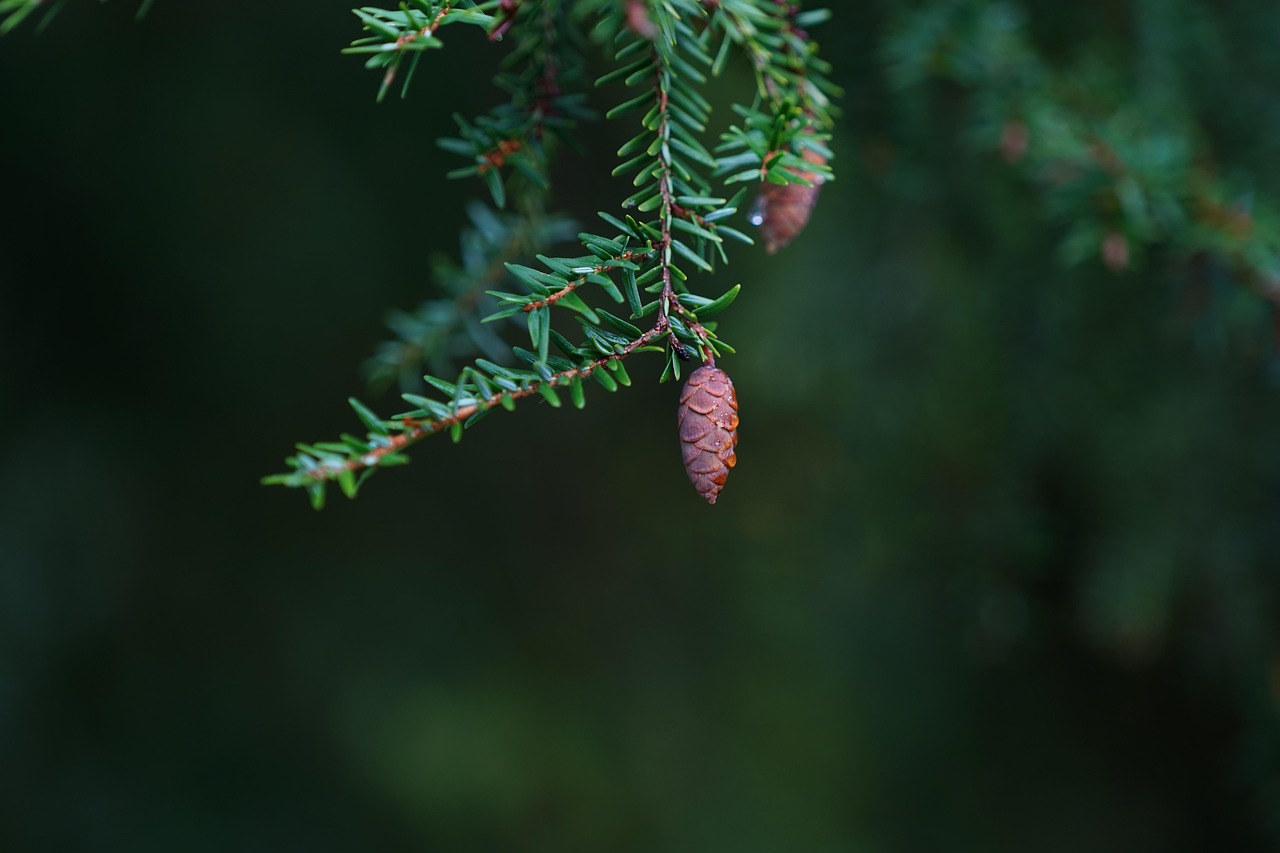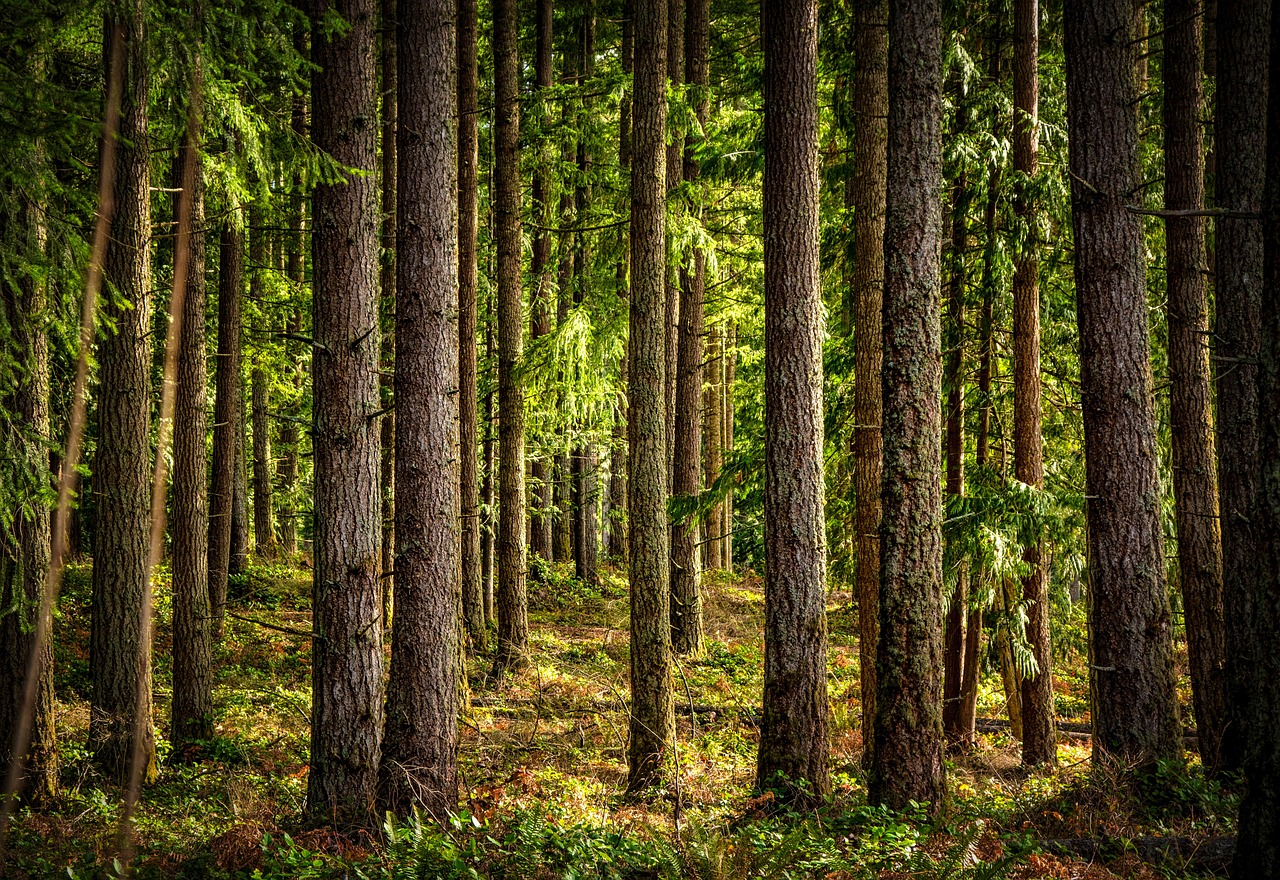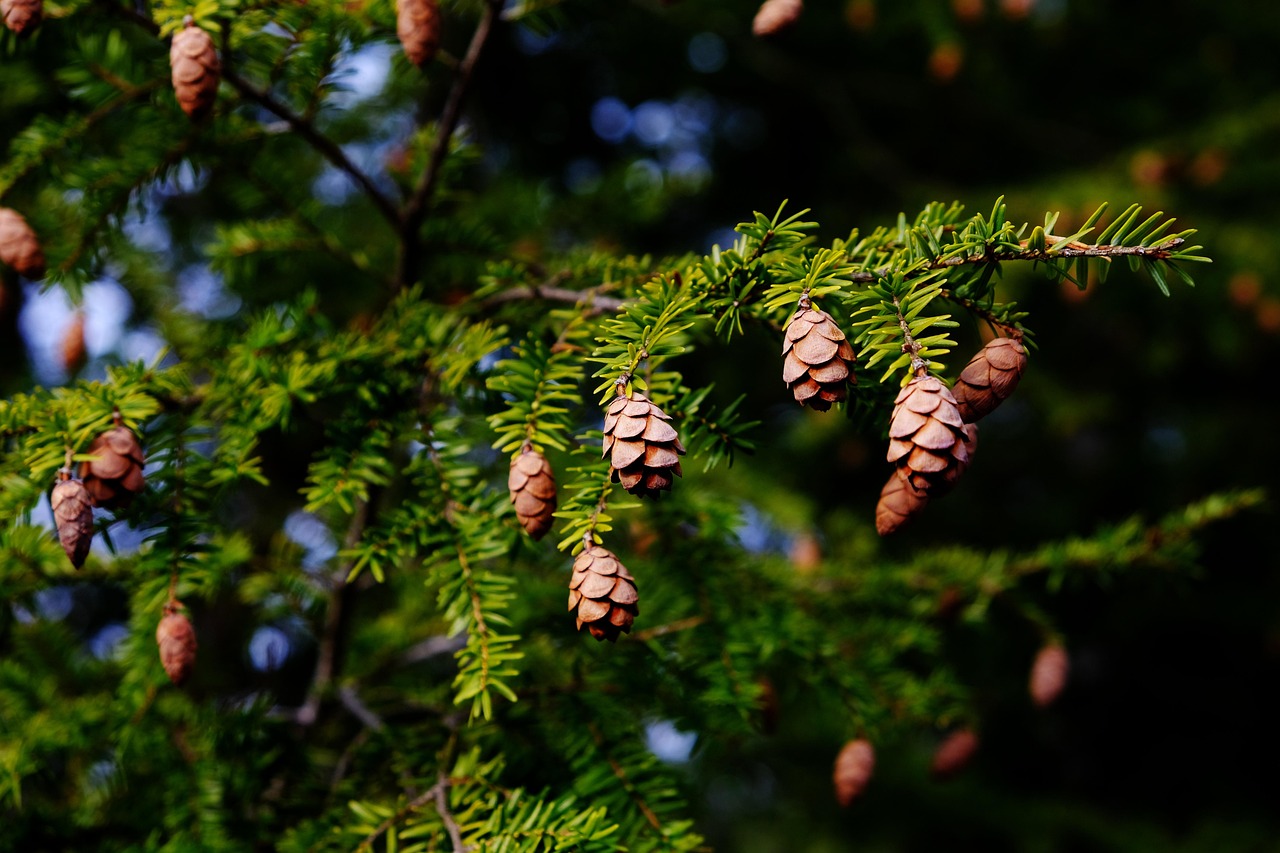Hemlock Trees: The Underrated Giants of the Forest
Hemlock trees are often overlooked giants of the forest, cherished for their beauty and ecological significance. These coniferous trees, belonging to the Tsuga genus, can grow to impressive heights and live for centuries. Their unique characteristics and roles in forest ecosystems make them invaluable yet underrated components of our natural world.
In many forests across North America and parts of Asia, hemlock trees play a crucial role in maintaining biodiversity. They provide habitat and food for various wildlife, including birds and mammals. Their dense foliage offers shelter, while their seeds are a food source for numerous species. Despite their importance, hemlocks face various threats, including invasive pests and climate change.

Understanding Hemlock Trees
Hemlock trees are part of the pine family, known for their soft needles and graceful appearance. There are several species of hemlock, but the Eastern Hemlock (Tsuga canadensis) and the Western Hemlock (Tsuga heterophylla) are the most prominent in North America. Here are some key characteristics that define hemlocks:
- Height: Hemlocks can reach heights of over 100 feet, making them notable giants in the forest.
- Needles: The needles are flat, soft, and dark green on top with a light underside, offering a unique look.
- Bark: The bark is thin and scaly, typically grayish-brown, contributing to the tree’s distinctive appearance.
- Cones: Hemlocks produce small cones that are about 1 inch long, which mature in the fall.
Their ability to thrive in shaded environments makes hemlocks essential in forest understory ecosystems. They often grow in cool, moist areas where competition for sunlight is fierce. This adaptability allows them to coexist with other tree species while contributing to a diverse plant community.
Ecological Importance of Hemlock Trees

The ecological role of hemlock trees extends beyond mere aesthetics. Their presence influences soil composition, water cycles, and habitat structures. Hemlocks contribute to forest health in several ways:
- Soil Stabilization: The root systems of hemlocks help prevent soil erosion, particularly in steep terrains.
- Water Regulation: Hemlocks play a vital role in maintaining watershed health by regulating water flow and quality.
- Biodiversity Support: They provide habitats that support diverse species, ensuring balanced ecosystems.
- Carbon Sequestration: Like other trees, hemlocks absorb carbon dioxide from the atmosphere, helping mitigate climate change.
Threats Facing Hemlock Trees

Despite their ecological importance, hemlock trees face significant threats that could endanger their populations. One of the most pressing issues is the introduction of the Hemlock Woolly Adelgid (Adelges tsugae), an invasive insect that feeds on the tree’s sap. This pest can lead to tree decline and death if not managed effectively.
Additionally, climate change poses risks through altered precipitation patterns and increased temperatures. These changes can affect hemlock health and growth rates. Conservation efforts are critical to protect these majestic trees from further decline.
A Glimpse into Hemlock Conservation
Conservation efforts for hemlock trees involve various strategies aimed at managing pest populations and restoring affected forests. Research is ongoing to develop biological control methods that can help mitigate the impact of invasive species. Additionally, public awareness campaigns raise knowledge about the importance of preserving hemlocks in local ecosystems.
| Threat | Impact |
|---|---|
| Hemlock Woolly Adelgid | Causes decline and death of trees |
| Climate Change | Alters growth conditions and increases vulnerability |
By understanding the significance of hemlock trees and the challenges they face, we can better appreciate these incredible giants of the forest. Protecting them is essential not just for their survival but for the overall health of our forest ecosystems.
The Unique Characteristics of Hemlock Trees
Hemlock trees are distinguished by their unique physical and ecological traits. These characteristics not only define their appearance but also contribute to their role within forest ecosystems. Understanding these features provides insight into why hemlocks are considered vital components of their habitats.
Physical Characteristics
Hemlocks exhibit several notable physical traits:
- Foliage: The needles of hemlock trees are flat and soft, measuring about 0.5 to 1 inch long. Their dark green color on top contrasts with the silvery underside, creating a visually appealing look.
- Size: Hemlocks can grow to impressive heights, typically ranging from 40 to 100 feet. Some specimens may even surpass this height under ideal conditions.
- Cones: The small, cylindrical cones mature in the fall and are approximately 1 inch long. They hang down from the branches, adding to the tree’s distinctive profile.
- Bark: The bark is thin, scaly, and may appear grayish-brown. This texture becomes more pronounced as the tree ages.
Growth Habits
Hemlocks typically prefer moist, shaded environments and are often found in forest understories. They thrive in acidic soils and can tolerate a range of conditions, which makes them quite resilient. The trees can live for several hundred years, with some documented cases reaching up to 1,000 years or more.
The Role of Hemlock Trees in Forest Ecosystems
Hemlocks play a crucial role in forest ecosystems beyond their physical traits. Their presence affects various ecological processes, supporting both flora and fauna.
Habitat and Biodiversity
Hemlock trees create unique microhabitats that support a variety of wildlife:
- Birds: Numerous bird species, such as the Black-throated Green Warbler and various woodpeckers, rely on hemlock forests for nesting and foraging.
- Mammals: Species like deer, squirrels, and even bears utilize hemlock forests for shelter and food sources.
- Invertebrates: The dense foliage and moist environment foster diverse populations of insects and arachnids, contributing to the food web.
Impact on Soil and Water Quality
The presence of hemlocks significantly affects soil health and water quality in their ecosystems:
- Soil Fertility: Hemlocks contribute organic matter through needle drop, which enriches the forest floor with nutrients.
- Water Filtration: The root systems help filter water as it percolates through the soil layers, enhancing groundwater quality.
- Erosion Control: Their extensive root systems stabilize the soil, reducing erosion on slopes and in riparian zones.
Uses of Hemlock Trees
Beyond their ecological importance, hemlock trees have been valued for various human uses throughout history.
Lumber and Wood Products
Hemlock wood is appreciated for its strength and versatility. It is commonly used in construction, furniture making, and paper products. The wood’s light weight makes it particularly desirable for various applications.
Traditional Uses
Indigenous peoples have utilized hemlock trees for centuries. The bark can be used for weaving baskets and making ropes. Additionally, the needles have been used to create teas that are believed to have medicinal properties.

Aesthetic Value
Hemlocks are also valued for their beauty in landscaping. Their graceful form and lush foliage make them popular choices for gardens and parks. They provide year-round interest due to their evergreen nature, contributing to the aesthetic appeal of natural and cultivated spaces.
Conservation Initiatives for Hemlock Trees
Given the threats facing hemlock populations, various conservation initiatives aim to protect these trees and their habitats. Non-profit organizations, government agencies, and community groups collaborate on several fronts:
- Pest Management: Development of integrated pest management strategies to control invasive species like the Hemlock Woolly Adelgid is a priority.
- Restoration Projects: Replanting efforts focus on restoring hemlock populations in areas where they have been decimated by pests or environmental changes.
- Public Education: Raising awareness about the importance of hemlocks helps foster community support for conservation efforts.
The ongoing commitment to conserving hemlock trees will ensure that these magnificent giants continue to thrive in our forests for generations to come.
Hemlock Trees and Their Role in Climate Resilience
As the world grapples with the impacts of climate change, the ecological role of hemlock trees becomes increasingly significant. These trees contribute to climate resilience in various ways, helping to mitigate the effects of environmental shifts.
Carbon Sequestration
Hemlock trees are effective at sequestering carbon dioxide, which is crucial in combating climate change. As they grow, they absorb carbon dioxide from the atmosphere and store it in their biomass. This process helps reduce the overall concentration of greenhouse gases, contributing to improved air quality.
Microclimate Regulation
The dense canopy of hemlock forests creates unique microclimates that can buffer against extreme weather conditions. These forests maintain cooler temperatures and higher humidity levels in their understories. This microclimate is beneficial for various plant and animal species, offering a refuge during heatwaves or droughts.
Hemlock Trees in Urban Environments
Hemlock trees are not only found in wild forests but also play important roles in urban settings. Their presence can significantly enhance the ecological landscape of cities.
Urban Forestry Benefits
Integrating hemlocks into urban forestry initiatives brings numerous benefits:
- Air Quality Improvement: Hemlocks help filter pollutants from the air, improving overall urban air quality.
- Noise Reduction: The dense foliage of hemlocks can act as a natural sound barrier, reducing noise pollution in urban areas.
- Stormwater Management: Hemlock trees assist in managing stormwater runoff, reducing flooding and erosion in cities.
Enhancing Aesthetic Value
Hemlocks add beauty and serenity to urban landscapes. Their graceful forms and lush greenery provide visual interest year-round. Additionally, they create spaces for recreation and relaxation, contributing to the well-being of urban residents.
Cultural Significance of Hemlock Trees
Throughout history, hemlock trees have held cultural significance for various communities. They are often featured in folklore, art, and traditional practices.
Folklore and Symbolism
In many cultures, hemlocks symbolize strength and resilience due to their towering presence and longevity. They are often associated with protection and shelter, serving as metaphors in literature and art. For instance, the Eastern Hemlock has been regarded as a symbol of strength in Native American traditions.
Traditional Medicine
Various indigenous cultures have utilized parts of the hemlock tree for medicinal purposes. The needles have been used to create infusions believed to boost immunity and treat ailments. Understanding these traditional practices highlights the importance of hemlocks not only ecologically but also culturally.
Research and Future Directions
Ongoing research into hemlock trees is critical for their conservation and understanding their role in ecosystems. Scientists are examining various aspects of hemlock biology and ecology to inform management practices.
Biodiversity Studies
Research initiatives focus on the biodiversity supported by hemlock forests. Studies aim to document the various species that rely on these trees for habitat and food. This knowledge is vital for developing effective conservation strategies.
Pest Management Research
Innovative pest management techniques are being developed to combat invasive threats like the Hemlock Woolly Adelgid. Ongoing studies explore biological controls that could help restore balance without harming native species.
The Importance of Community Involvement
Community engagement plays a crucial role in the conservation of hemlock trees. Local efforts can significantly impact conservation outcomes.
Volunteer Programs
Many organizations offer volunteer programs focused on hemlock conservation. These initiatives allow community members to participate in restoration projects, educational workshops, and monitoring efforts. Such hands-on experiences foster a deeper connection between people and nature.
Advocacy and Awareness Campaigns
Raising awareness about the importance of hemlock trees is essential for garnering support for conservation efforts. Schools, non-profits, and local governments can collaborate on campaigns that highlight the ecological value of these trees, encouraging community stewardship.
Through collaboration and dedication, communities can help safeguard the future of hemlock trees, ensuring their continued presence in our forests and urban environments.
The Future of Hemlock Trees
As we look to the future, the significance of hemlock trees becomes even more pronounced. Their ability to adapt to changing climates and their role in forest ecosystems underscore the need for ongoing research and conservation efforts. The future of hemlocks depends on a combination of scientific understanding, community involvement, and proactive management strategies.
Innovative Research Approaches
Researchers are employing innovative methods to study hemlock trees and the ecosystems they inhabit. Cutting-edge technologies such as remote sensing and genetic analysis provide new insights into tree health and population dynamics. These advancements can inform conservation strategies and improve management practices.
Policy and Legislation
Effective policy and legislative measures are crucial for the protection of hemlock trees. Advocacy for stronger environmental regulations can help safeguard forests from development pressures and invasive species. Support for funding research initiatives and conservation programs is essential to ensure that hemlocks receive the attention they deserve.
Restoration Challenges
While restoration efforts are underway, challenges remain. Addressing the impacts of climate change, habitat fragmentation, and invasive species requires coordinated action among various stakeholders. Effective restoration will necessitate adaptive management strategies that can respond to evolving ecological conditions.
Final Thoughts
Hemlock trees are undeniably underrated giants of the forest, playing a vital role in maintaining biodiversity and ecosystem health. Their unique characteristics and contributions to climate resilience highlight their importance in both natural and urban environments. Protecting these magnificent trees is not only essential for the health of our forests but also for the well-being of future generations.
The challenges facing hemlocks are significant, yet they are not insurmountable. Through community engagement, innovative research, and strong advocacy, we can work together to ensure the survival of these remarkable trees. By raising awareness and fostering a sense of stewardship, we can inspire action that contributes to the conservation of hemlock trees.
Ultimately, hemlocks remind us of the intricate connections within ecosystems and the importance of preserving natural heritage. As we continue to explore and understand these remarkable trees, let us commit to safeguarding their future for years to come. Together, we can appreciate their beauty, recognize their value, and protect our forests as vital resources for all life on Earth.
